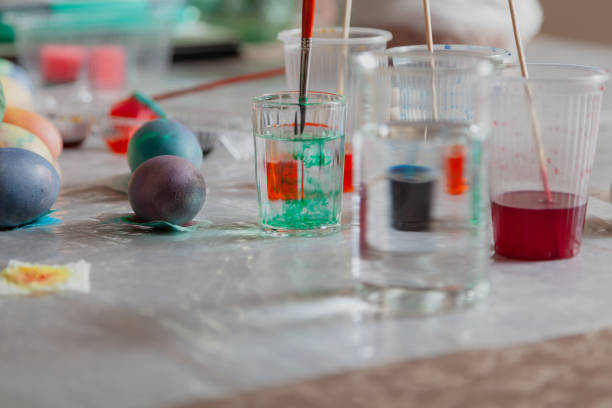
For centuries, the colorful eggs – Pysanky — have brightened up spring in Ukraine. This traditional craft has been passed down through generations. Since the Russian invasion of Ukraine in February, many Ukrainians around the world feel that the elaborate eggs are even more important.
According to Theresa Vargas of the Washington Post, people in the Ukrainian diaspora are using the colorful eggs to raise funds for humanitarian aid.
Folk art is believed to have originated in Ukraine before Christianity when people decorated eggshells as a way to pay homage to deities, welcome spring, and honor the return of the sun. These hollow eggs were given their name from the word pysaty or write. This was due to the use of wax, scratching instruments, and paint. The eggs were colored with plant dyes, and later synthetic dyes, to create a more elaborate way of celebrating the holiday.
The most common method of decorating a pysanka today involves a stylus and beeswax, as well as multiple dips in dye. This is similar to using a white pencil to draw designs on Easter eggs.
Initially, the art was linked to pagan beliefs about the transition from winter to spring. In the 9th and tenth centuries, when Christianity arrived in Ukraine, folk rituals were grafted onto Christian concepts of spiritual renewal and resurrection.
According to Volodymyr Hodys, a Ukrainian scholar in the Encyclopedia of Ukraine, pysanky are associated with many folk beliefs. They can “protect from evil, heal illnesses, and protect homes from fire and lightning.”
The eggs still hold a lot” of meaning for people like Sarah Bachinger from Round Lake, New York. Anastas” a Tsioulcas of NPR, tells her that this tradition has long been associated with resistance against Russian rule in Ukraine. Pysanky, which the Soviet Union banned because of their religious connotations. Ukrainians left their homelands but remained loyal to their traditions. Bachinger told Tsioulcas that “the diaspora preserved the tradition.”
NPR reports Pysanky For Peace, a group Bachinger established to raise money on the ground for humanitarian assistance in Ukraine.
Bachinger isn’t the only one. According to the Washington Post, other members of the Ukrainian diaspora also use homegroisn’tsanky and Etsy eggs sales to raise funds.
What is another extension of the symbolism of the egg? Exhibitions in museums. Linda Greenstein of the Boston Globe reports that Bachinger is a museum professional who has created “Pysanky For Peace,” a traveling exhibit featuring 70 eggs decorated with volunteers. The exhibition will”be on display at t”the Wenham Museum until June 18, Massachusetts. Bachinger told the Globe that she’ll donate money to Razom. This nonprofit provides medical supplies in Ukraine.
Another take on Pysanshe’ll “The Pysanka – A Symbol of Hope,” which will be on display at the Ukrainian Institute of America in New Y”rk until August 24. The exhibit”, curated by Ukrainian ethnographer and artist Sofika Zielyk, will not only display eggs but also invite visitors to create their pysanky.
In an announcement, museum officials said that “this installation is a living, evolving, and ongoing endeavor.” As more people arrive — both in person “and via mail — the installation will continue to grow in size “and symbol power.
